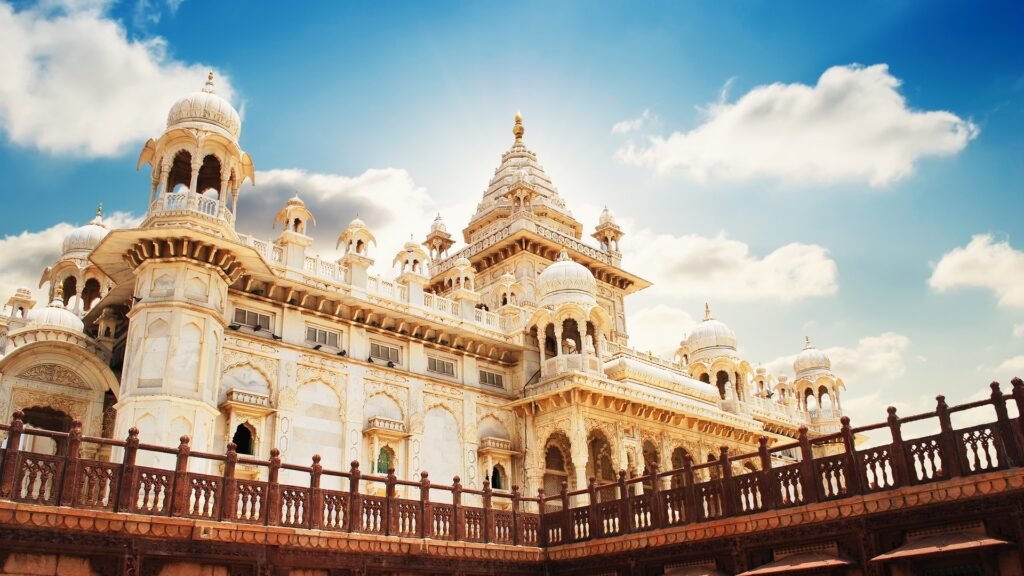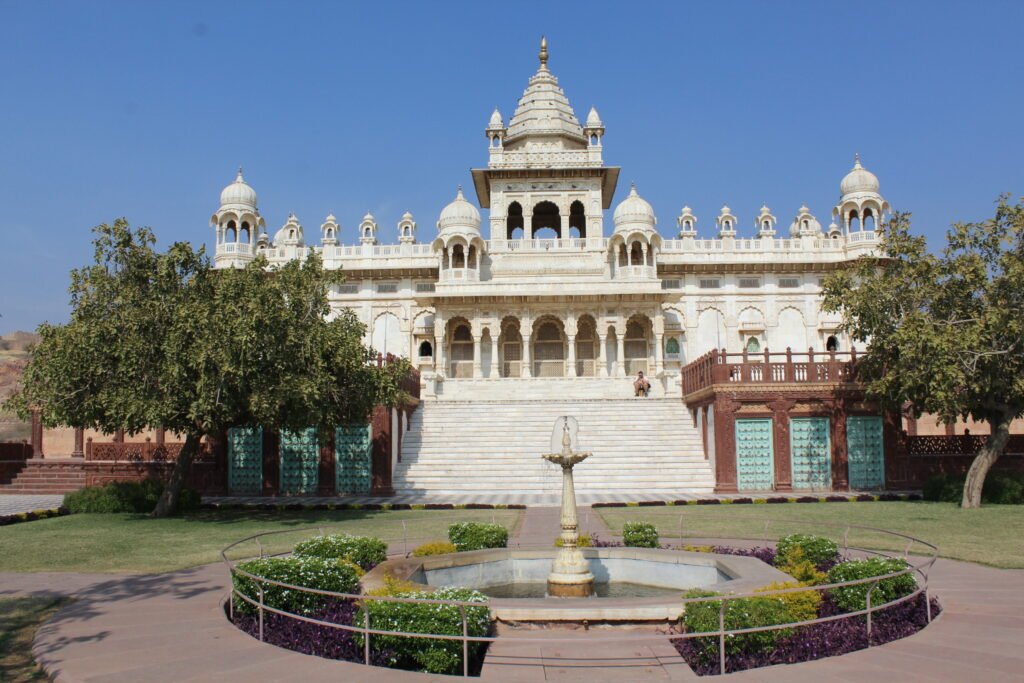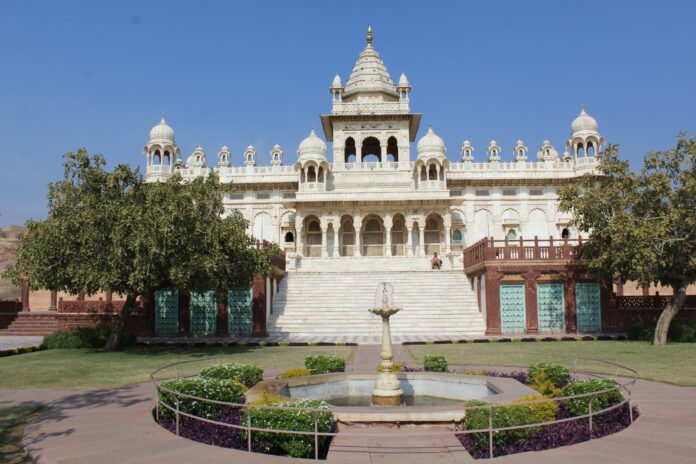

Rajasthan, the land of vibrant traditions and royal legacies, is home to numerous cities that boast stunning architectural marvels. Among these, Jodhpur stands out as a city that seamlessly blends history, culture, and awe-inspiring structures. Often referred to as the Blue City due to the distinctive color of its buildings, Jodhpur is an architectural treasure trove, with palaces, forts, and temples that reflect the grandeur of its past. Beyond the boundaries of Jodhpur, the Marwar region is dotted with equally impressive monuments that offer a glimpse into the opulent lifestyle and skilled craftsmanship of the bygone era.
This article takes you on a journey to uncover the architectural wonders of Jodhpur and the surrounding region, revealing why this part of Rajasthan is a must-visit for history buffs, architecture lovers, and travelers seeking cultural enrichment.
Mehrangarh Fort: A Symbol of Power
Standing tall on a rocky hill overlooking the city, Mehrangarh Fort is undoubtedly the crown jewel of Jodhpur’s architectural heritage. This colossal fort, founded by Rao Jodha in 1459, is one of the largest and most well-preserved forts in India. Rising 400 feet above the city, Mehrangarh dominates the skyline, offering panoramic views of Jodhpur’s blue-hued houses and the sprawling Thar Desert in the distance.
Mehrangarh is a masterpiece of Rajput architecture, with thick defensive walls, towering gates, and intricate palaces within. The fort houses several courtyards, each more beautiful than the last, adorned with delicate carvings and mirror work. Highlights within the fort include the Phool Mahal (Palace of Flowers), the Sheesh Mahal (Mirror Palace), and the Moti Mahal (Pearl Palace). These halls, once used by the royalty for important ceremonies, showcase exquisite craftsmanship, from finely carved sandstone screens to colorful stained-glass windows.
The fort also houses a museum that offers visitors a glimpse into Marwar’s royal past, with displays of ancient weaponry, ornate palanquins, and royal artifacts. As you walk through the halls of Mehrangarh, you can’t help but feel the grandeur and power of the Rathore rulers who once controlled this region.
Umaid Bhawan Palace: A Modern Marvel
While Mehrangarh represents the historical might of Jodhpur, Umaid Bhawan Palace showcases the city’s modern architectural accomplishments. Built in the 20th century by Maharaja Umaid Singh, this grand palace is a blend of Western and Indian architectural styles. It was designed by British architect Henry Lanchester and is one of the largest private residences in the world.
Umaid Bhawan Palace was constructed as a relief project to provide employment during a severe famine that struck the Marwar region in the 1920s. The palace, made of golden-hued sandstone, boasts Art Deco influences with its sleek lines and geometric patterns, a departure from the traditional Rajput architecture seen in Jodhpur. Inside, the palace is lavishly decorated with intricate murals, grand chandeliers, and opulent furnishings. A part of the palace has been converted into a luxury hotel, while another section serves as a museum that showcases royal memorabilia, from vintage cars to regal attire.
Visitors to the palace are treated to an experience of royal luxury, as they stroll through the gardens, admire the architecture, and learn about the fascinating history of the Marwar royals.
Jaswant Thada: The Marble Memorial
Nestled in the shadows of Mehrangarh Fort, the Jaswant Thada is a lesser-known but equally captivating architectural gem in Jodhpur. Built in 1899, this white marble cenotaph was constructed in memory of Maharaja Jaswant Singh II by his son Maharaja Sardar Singh. Known as the “Taj Mahal of Marwar,” Jaswant Thada is a stunning example of Rajput architecture, with its intricately carved marble lattice screens and delicate domes.
The cenotaph is surrounded by peaceful gardens, and visitors are often struck by the serenity and beauty of the place. The main memorial houses portraits of the Marwar rulers, offering a glimpse into the royal lineage of Jodhpur. Jaswant Thada is a tranquil retreat, and its peaceful atmosphere provides a welcome contrast to the bustling city below.
Stepwells of Jodhpur: Engineering Marvels
Jodhpur is not only home to grand palaces and forts but also boasts several stepwells, which are an important part of the region’s architectural and engineering heritage. Stepwells, or baoris, were constructed to harvest water in the arid desert landscape and served as social gathering spots. One of the most famous stepwells in Jodhpur is the Toorji Ka Jhalra, located in the heart of the city.
Built in the 18th century, Toorji Ka Jhalra features beautifully carved steps that lead down to a pool of water. The intricate design and craftsmanship of the stepwell reflect the ingenuity of Rajput engineers, who combined utility with aesthetics. Today, Toorji Ka Jhalra has been restored and is a popular spot for locals and tourists alike, offering a glimpse into the practical yet artistic side of Jodhpur’s architecture.
Beyond Jodhpur: Exploring the Architectural Marvels of Marwar
While Jodhpur is undoubtedly the center of architectural splendor in the Marwar region, there are several other destinations nearby that showcase equally impressive monuments.
Kumbhalgarh Fort: The Great Wall of India
Located a few hours from Jodhpur, Kumbhalgarh Fort is a UNESCO World Heritage Site and one of the most impressive forts in Rajasthan. Built in the 15th century by Rana Kumbha, the fort is famous for its massive walls, which stretch over 36 kilometers and are said to be second only to the Great Wall of China in length. Kumbhalgarh’s walls are wide enough to allow eight horses to walk side by side, a testament to the fort’s defensive might.
Inside the fort, visitors can explore palaces, temples, and gardens, all showcasing the grandeur of Rajput architecture. The fort’s strategic location in the Aravalli hills makes it a perfect day trip from Jodhpur for those interested in history and architecture.
Nagaur Fort: A Hidden Gem
Another architectural marvel near Jodhpur is the Nagaur Fort, a fort that combines both Mughal and Rajput architectural styles. Nagaur Fort was originally built in the 2nd century and later expanded by the rulers of Jodhpur. The fort is known for its palaces adorned with frescoes and its beautiful water systems, which are a marvel of ancient engineering.
Nagaur Fort may not be as well-known as Mehrangarh or Kumbhalgarh, but its serene atmosphere and stunning architecture make it a hidden gem worth exploring.
The Legacy of Marwar’s Architecture
The architectural marvels of Jodhpur and the surrounding Marwar region are a testament to the grandeur and vision of the Rajput rulers. From towering forts that symbolize power and defense to opulent palaces that reflect royal luxury, these structures offer a window into a rich and fascinating past.
For travelers looking to explore Rajasthan’s architectural heritage in depth, the Classic Marwar Tour provides an immersive experience. This tour covers the highlights of Jodhpur and beyond, offering a comprehensive look at the region’s architectural splendor.
Conclusion
Jodhpur and the Marwar region are home to some of India’s most iconic and awe-inspiring architectural landmarks. Whether it’s the majestic Mehrangarh Fort, the regal Umaid Bhawan Palace, or the hidden treasures of Nagaur and Kumbhalgarh, the architectural wonders of this region will leave a lasting impression on every visitor. Exploring these structures is like stepping back in time, where the stories of Rajasthan’s royal past are etched into every stone and carving, waiting to be uncovered.


